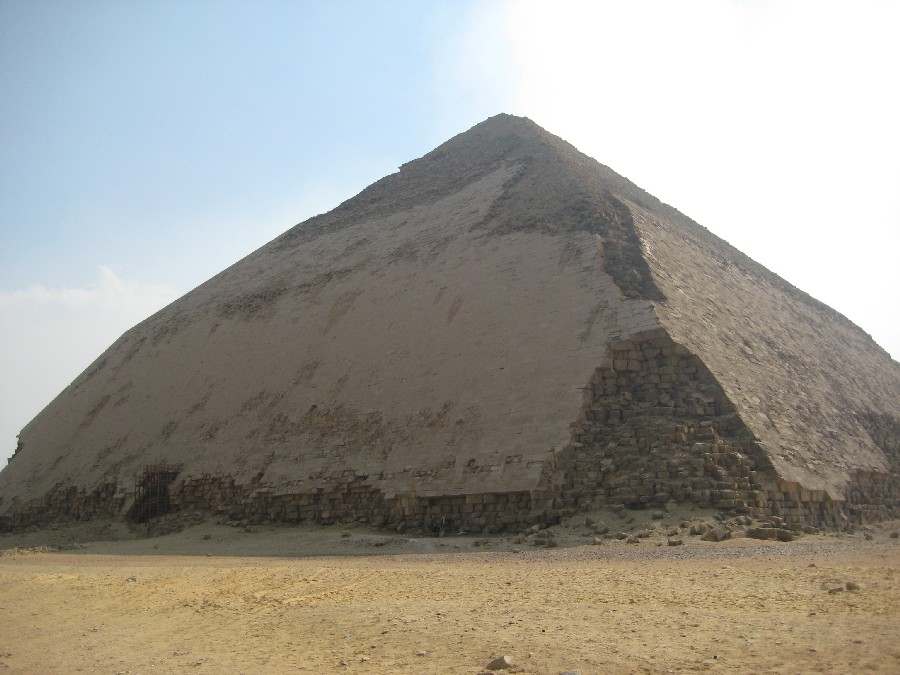
Still at Dahshur, this is called the "bent" pyramid. It owes its' name to a mistake. The initial part of the pyramid was started with the sides at a 50 degree angle. However, part-way up they realized that at that angle, the pyramid would not only be very, very tall, but would collapse, so they changed to a 43 degree angle.

Here you can see one of the entrances to the burial rooms of the pyramid. This pyramid is also unique in that there are 2 entrances: one on the west and one on the north.
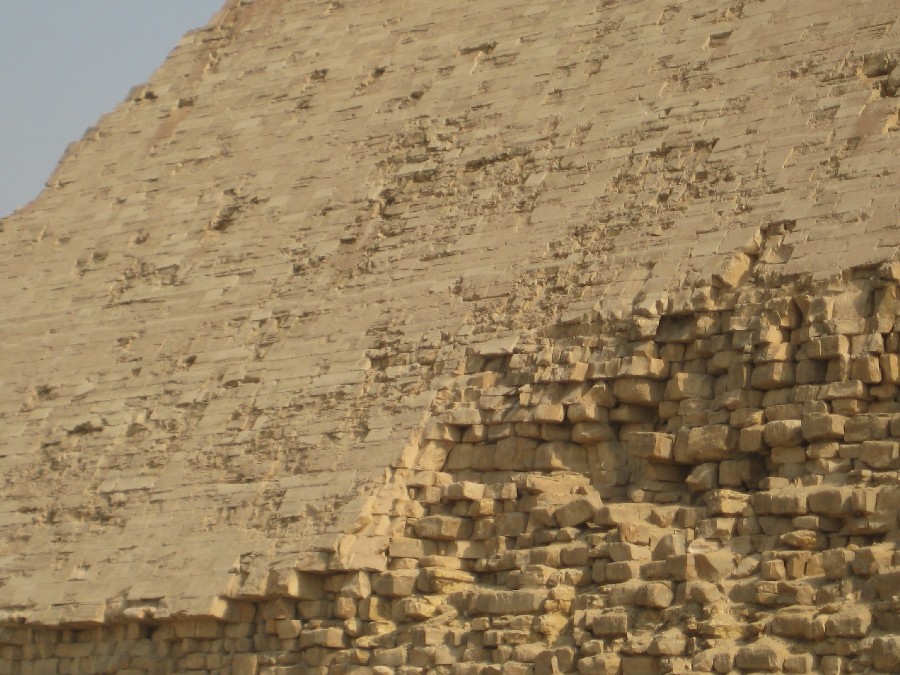
This pyramid also has one of the best preserved casings in-tact (not reconstructed!). You can see this on the first picture as well as this one.
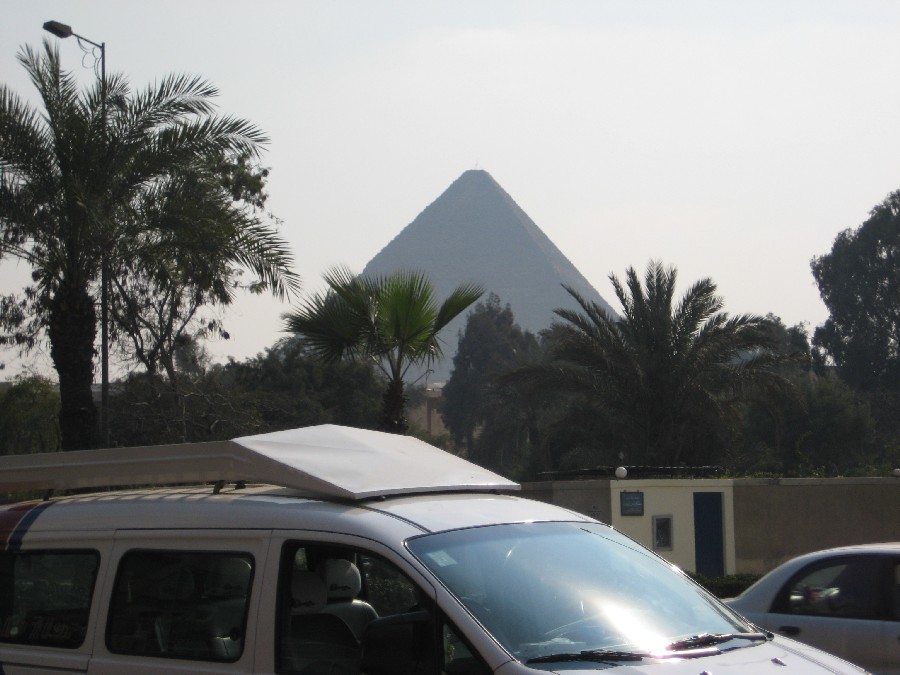
We then grabbed lunch and headed to Giza. Giza was different than what we had imagined as it is somewhat in the middle of the city. Giza itself is like a suburb or section of Cairo and the pyramids are right there, surrounded by city.

There are several pyramids at Giza, with 3 main ones. They were built for 3 generations of kings: Cheops, Chephren, and Micerinus. This is the pyramid of Cheops.
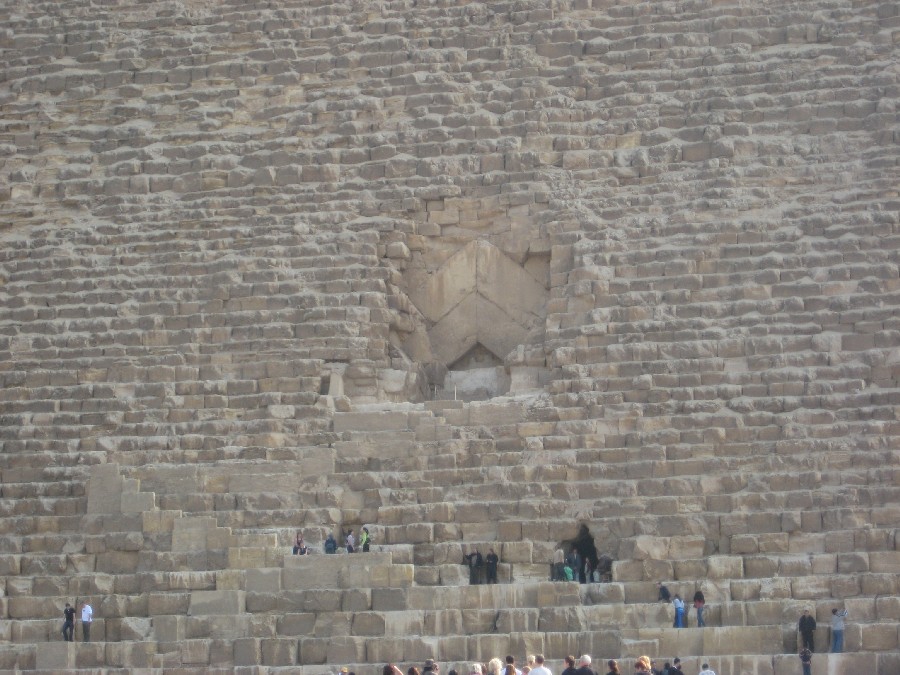
This is the entry to the cooridor in the pyramid. It is more elaborate than the others.
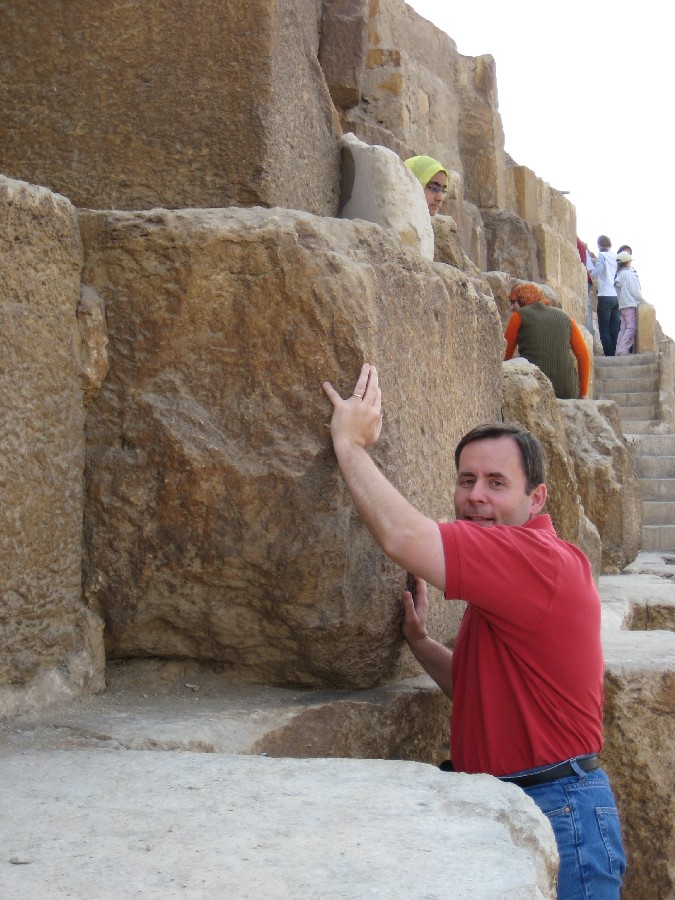
These next two pictures are our attempt to give you a sense of the scale of these pyramids and the rocks that were used to build them. The pyramid of Cheops, for example, was built at 146 meters tall (today it is 137 meters high since the top has been lopped off.
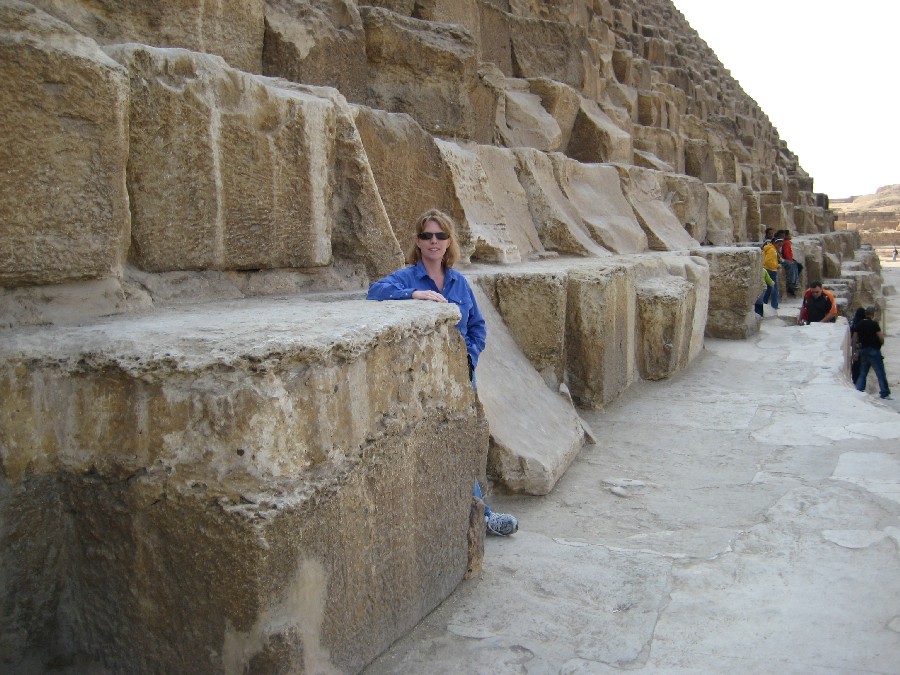
Another view of the scale of the rocks.
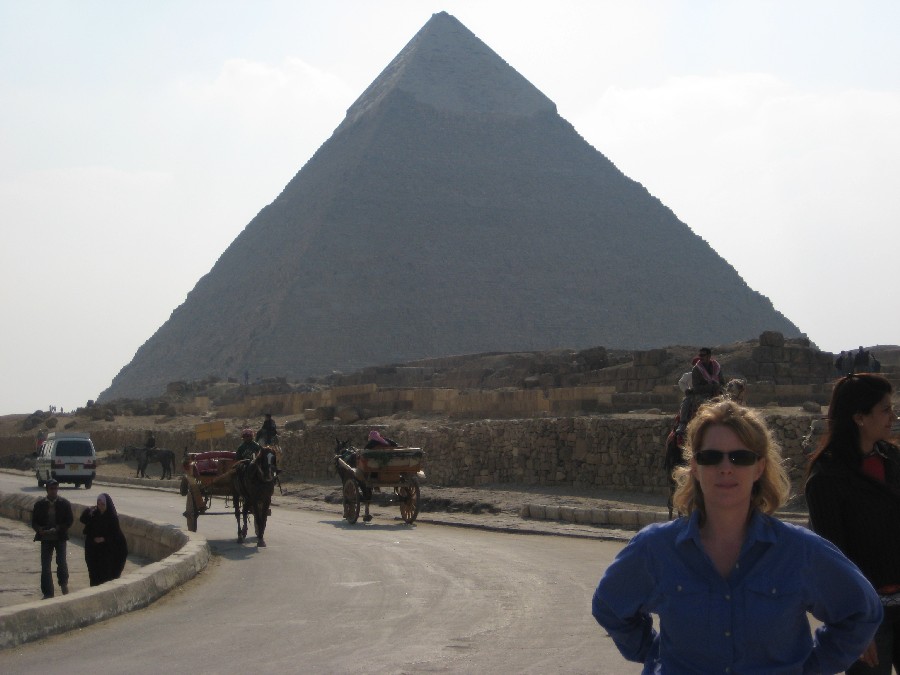
The 2nd pyramid here, that of Chephren. It is the only one of the 3 at Giza which still has the smooth external facing of the pyramid.